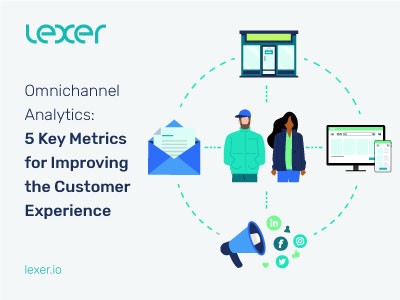Customer Behavior is Changing. Are You Paying Attention?
March 4, 2021You can also find this article on the Simon Data website: https://www.simondata.com/resources/customer-behavior-is-changing/?utm_campaign=customer-behavior&utm_medium=partnerships&utm_source=cdp institute&utm_content=blog
Have customer behaviors and preferences remained static over the past year? They’ve likely changed in the last week.
Confession: The last time I bought real, work-appropriate, non-stretchy pants was in February of 2020. That’s over a year without a work-wear purchase, and I bet I’m not alone.
2020 (and now at least this first part of 2021) was the year of Zoom calls, home office setups, and staycations. Blazers, hanging out with friends in bars, and international trips were out, and athleisure, home exercise equipment, and cleaning supplies were very, very in.
The shifts resulting from Covid were wide-felt and instantaneous when the world ground to a halt in March 2020, but we expect the gradual climb back to signal a lot more minute shifts in customer behavior. And companies are expected to keep up.
Some areas are still under strict lock-downs, while in others, we see workplaces and restaurants slowly re-open. Customers’ circumstances may dictate whether they’re hopping on a plane tomorrow or still looking for ways to upgrade their homes as they continue to quarantine. It’s never been ‘one size fits all,’ but now consumer behavior can shift wildly from one customer cohort to the next.
So I have to ask: are you able to measure and act on your customers’ implicit and explicit buying signals?
What Makes an Agile Marketer?
Marketers have to keep a close pulse on customer behavior — what they are browsing or adding to their cart, what emails they’re opening or ads they’re clicking, and what content inspires them to purchase. You need to understand them and show them that you understand.
In many cases, creative marketers have no shortage of ideas for exciting campaigns to run but don’t have easy access to up-to-date customer data to make these ideas a reality.
For example, we had a client recently run a timely Super Bowl campaign where they triggered emails to any users who had viewed or purchased Kansas- or Florida-specific products or who have an order with a shipping or billing address in one of those areas. They personalized the copy with the specific team and added in product recommendations that were team-specific.
Personalized content like this is shown to have a significantly higher click and conversion rate than traditional batch and blast messaging. Behaviorally triggered messages convert at a rate of 22x over batch and blast messaging.
So what’s necessary to pull off a hyper-personalized campaign?
You have to have access to your customer data. And not just their historic purchase history, but also the real-time activity of what they have recently viewed or abandoned.
This data is often stored somewhere within the business. It may be tracked in a data warehouse or via your ecommerce platform, but is it accessible to your marketing team? We believe in democratizing data to ensure that marketers have access to what they need to bring creative, timely, and personalized campaigns to life.
How Can Marketers Keep Up with Customer Shifts?
Customers that may have been based in New York before 2020 might now be purchasing from sunny Florida or snowy Colorado. Static, unchanging customer cohorts and segments are likely outdated, and it’s vital that your marketing tech can keep up as buyers move and their requirements change.
Centralize!
If customer behavior is constantly shifting, then your data should be complete to catch all the signals. First, you need to centralize all real-time and historical customer data for building dynamic segments. From there, it should be easy to test and iterate against your unique and ever-changing audience.
In our own research looking at client data, we found that segments that contain conditions that leverage multiple integrations have 110% greater lift compared to segments that leverage only one integration.
Dynamicize!
Next, we highly suggest that any segment you create is dynamic. As your company gathers new signals from your consumers that they can automatically and dynamically fall into and out of segments based on this behavior.
Comparing Simon Data clients who have run abandonment campaigns using both event-triggered flows and high-latency segment-triggered flows, we found that low-latency behavioral triggers perform 100% greater with no increase in unsubscribes.
Test & learn!
Next, you need to consider the messaging that you’re sending to these audiences. Are you able to experiment and test what subject lines, content, and creative resonate in each channel? Experimentation is often the key to finding the right fit for your customers and unlocking incremental revenue. Examining our own client data, we discovered that experimentation can drive up to a 63% lift for behavioral triggers, and that value increases dramatically (up to 3.5x) when looking at experiments with 4 or more variants tested.
Take a bow!
Finally, I salute you, dear marketer, for the work you’ve put in over a challenging period to make your brands successful. Keeping up with consumers’ quickly shifting habits in our new reality is no easy feat.
Whether you are working from your couch or back to the office, I encourage you to take a look at your marketing program and the marketing technology that underpins it. Ensure that you’ve put these three steps into place to understand your customer at this moment and ensure that you’ll be relevant to them in the next. To learn more about how marketers can successfully evolve alongside customers, read how one Simon client saw a 300x boost in engagement using Simon Data’s fine-grained, self-serve segmentation tools.


